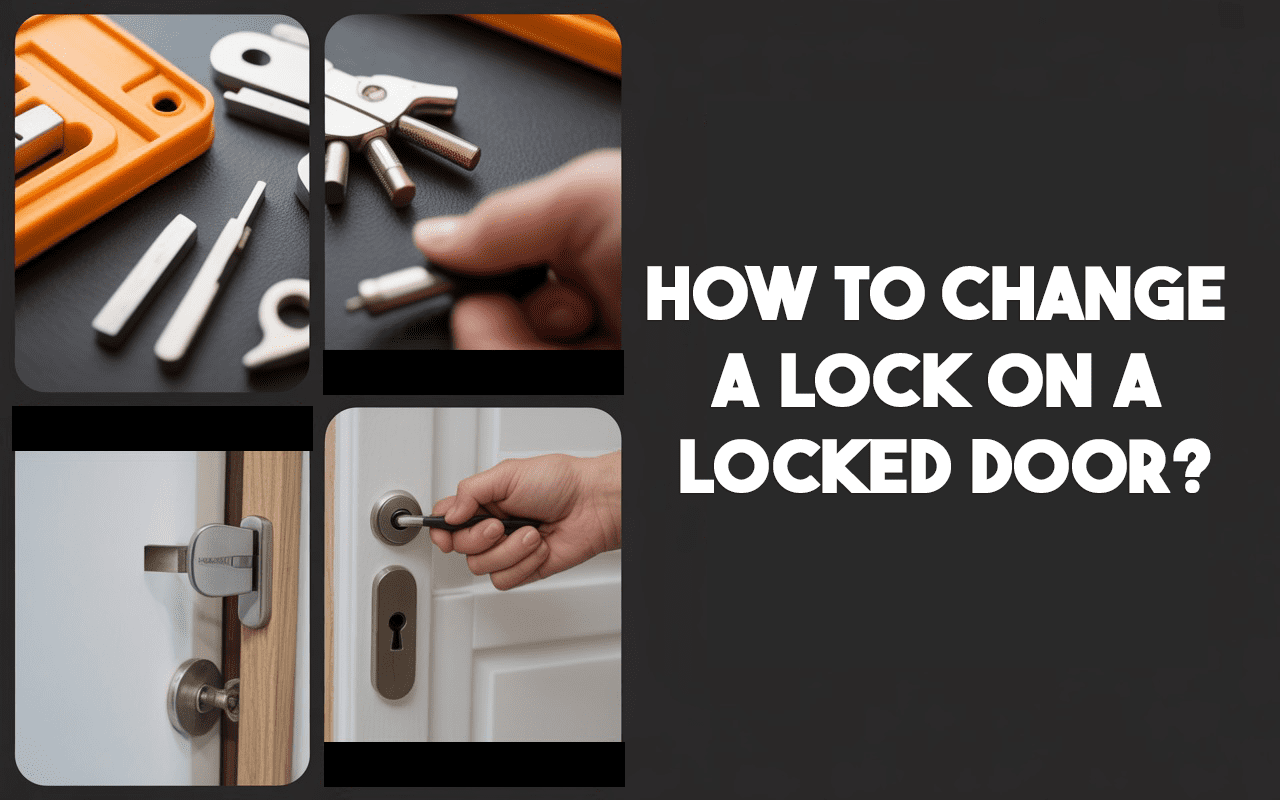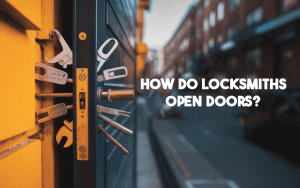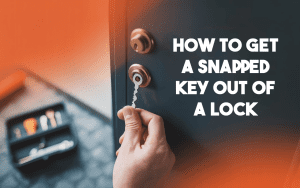You can replace your lock even if your door is locked and you’ve lost the key. If you want to change it for security reasons, that’s also possible. The most straightforward method is:
“To change a lock on a locked door, you need to remove the lock cylinder. If you have the key, insert it, turn slightly to align the cam, and slide the cylinder out before fitting a new one. Without the key, you will need a lock cylinder removal tool, drill, or help from a lockout locksmith to remove the old lock before installing a new cylinder or barrel.”
That’s the quick solution. Let’s break down each scenario step by step. We’ll cover whether you have the key or not and if your door is UPVC, wooden, or coded. We’ll also discuss costs, legal aspects, and the best DIY methods.
Step-by-Step: How to Change a Lock on a Locked Door
Changing a lock might seem tricky, but it’s often straightforward once you know your lock type.
The most common locks in the UK are:
- Euro cylinder locks are often found in UPVC doors.
- Yale-type night latches are used.
- Mortice locks are used for wooden doors.
- Identify the lock type – a UPVC door will almost always use a Euro cylinder. Wooden doors may have either a mortice lock (embedded inside the door) or a Yale night latch.
- Check to see if you have the key – With a key, lock removal is straightforward. Without it, you will need either a tool for removing the lock cylinder or drilling.
- Remove the fixing screw —open the door if possible and locate the long screw on the edge of the door near the latch.
- Extract the cylinder –
- With key: Insert the key, turn slightly (around 10–15 degrees), and pull out the lock cylinder.
- Without key: Drill into the lock barrel and remove the broken cylinder with pliers or a pulling tool.
- Fit the new lock:
- Slide the new cylinder into place.
- Secure it with the fixing screw.
- Test it with the key.
- Tighten everything once it works.
This process takes about 10–20 minutes if you have the right tools.
How to Remove a Locked Lock from a Door
If the lock is jammed or you have lost the key, you still have options:
- Use a cylinder removal tool – this grips the lock and allows you to extract it without a key.
- Drill the cylinder —a common DIY method, though it will destroy the lock.
- Please consider contacting a locksmith, as it is the quickest and least damaging method if you are uncertain.
How to Change a Lock on a Locked Door Without a Key
This is one of the most common situations. Without the key:
- Drilling is usually the easiest option. Use a metal drill bit to bore into the lock until the pins break.
- Once the cylinder is damaged, you can use pliers to remove it.
- Replace it with a new cylinder of the same size.
Note: Drilling a lock can damage the door if not done carefully. If you’re not confident, it’s better to call a professional locksmith.
Changing a Door Lock Cylinder: With and Without Key
- With a key – Simple: insert the key, loosen the screw, turn slightly, and slide out the barrel.
- If you don’t have a key, you’ll need to use a removal tool or drill. Some locks may also be bypassed with specialist locksmith tools.
How to Change a Barrel Lock in a uPVC Door
UPVC door repairs are a very common problem in the UK in upvc door usually use a Euro cylinder.
- Open the door and locate the fixing screw near the latch.
- Insert the key, turn slightly, and pull out the cylinder.
- Insert the new barrel, align it, and tighten the screw.
- Test the lock before closing the door.
How to Remove a Lock Barrel from a uPVC Door Without a Key
This is trickier because UPVC locks are designed to resist tampering. Options include:
- Carefully drill the lock cylinder to shatter the pins.
- Lock-pulling tools which are designed to extract Euro cylinders.
- Hiring a locksmith is the most secure option to prevent any harm to the entire mechanism.
Changing Locks on Wooden Doors
Wooden doors often have different lock types:
- Mortice locks require the faceplate to be unscrewed, the mechanism to be removed, and a new one to be fitted.
- Yale night latches —the cylinder and latch can be replaced separately by unscrewing the backplate and swapping the unit.
How to Change the Lock Code on a Door
For digital or coded locks, you don’t need to remove the cylinder. Instead:
- Follow the manufacturer’s instructions for resetting the code.
- If you’ve forgotten the code, some digital locks may need to be reset completely, which might require disassembly.
Frequently Asked Questions
Can you replace just the lock on a door?
Yes, in most cases you can replace just the cylinder or barrel without replacing the entire door or handle set.
How much does it cost to change a lock on a door?
- DIY replacement: £15–£40 for a new lock.
- Locksmith service: £80–£150, depending on lock type and time of day.
Can I rekey a door lock myself?
Rekeying requires specialist tools and experience. In the UK, most homeowners simply replace the cylinder instead—it’s cheaper and easier.
Can I change locks myself?
Yes, with basic DIY skills. UPVC and Yale locks are straightforward. Mortice locks are more complex.
How much does a locksmith charge to change locks in the UK?
Expect to pay around £90–£150, with emergency call-outs costing more.
What is the cheapest way to change locks on a house?
Buy a Euro cylinder from a hardware store (from £15) and fit it yourself with a screwdriver.
Is changing the lock illegal in the UK?
It depends:
- In your own home: legal.
- In rented or shared accommodation: you may need landlord permission.
- During disputes (e.g., divorce): it could be considered illegal if done without agreement or court order.
How hard is it to change a door lock?
Most locks are relatively easy, taking 10–20 minutes. Mortice locks are more time-consuming.
Can my ex-wife change the locks on our house?
Only if she is the legal homeowner or has court approval. Otherwise, it may be illegal.
Can I get in trouble for changing the lock?
Yes, if you change locks on a rented or shared property without the proper permission.
Can a locksmith open a locked door in the UK?
Yes, locksmiths can open locked doors using non-destructive methods like picking, bypass tools, or bump keys.
Final Tips for Homeowners
- Always measure your existing cylinder before buying a replacement.
- Keep a spare key with someone you trust to avoid lockouts.
- If you are unsure, hiring a professional locksmith is safer than risking damage to your door.
- For rented or shared properties, always check the legal implications before changing a lock.





